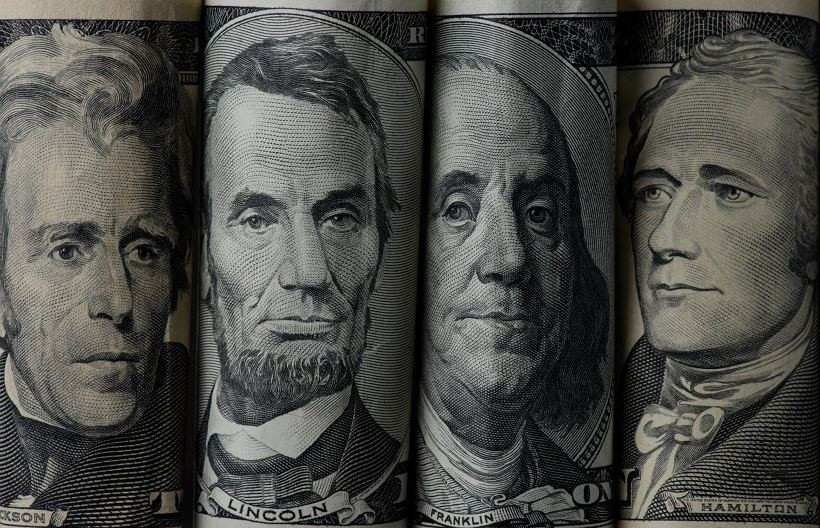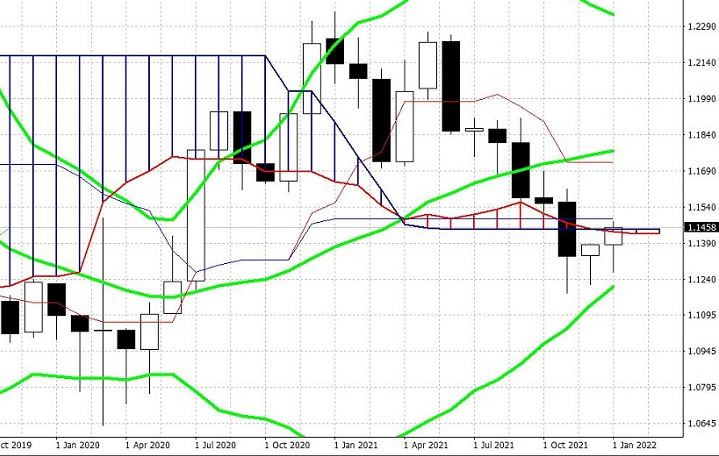The US dollar continues to be depressed: the greenback is losing its positions in all major pairs. Moreover, this process is uneven. For example, when paired with the franc, yen and Canadian dollar, the greenback is rapidly plunging, while when paired with the European currency, it is getting cheaper at a more measured pace: despite the decline in the US dollar index, the EUR/USD pair cannot get close to the borders of the 15th figure, demonstrating rather weak intraday volatility.
However, despite the "uneven fall", the fact remains that the greenback is actively getting cheaper throughout the market, despite a record increase in inflation, a decrease in unemployment in the United States and the hawkish attitude of members of the Federal Reserve. Given this inconsistency, there was a correspondence discussion among experts on the market. According to some analysts, it is too early to write off the dollar, according to others– the "era" of a strong dollar has come to an end. Looking ahead, it should be noted that in my opinion, the greenback will still manifest itself, whereas the current growth of EUR/USD is only a corrective pullback within the framework of a temporary (but widespread) weakening of the US currency.

Let's take a look at the monthly chart of the pair. In June last year, the price reached a multi-month high (1.2250), after which it turned 180 degrees and steadily declined until almost the end of the year. The annual low was updated at 1.1184 in November. That is, in less than six months, the pair has walked almost a thousand points down - almost recoilless, only with flat periods of stagnation. The "bearish banquet" ended in December, then traders pushed off from the annual low and hung out in the price niche of 1.1230-1.1360 for six weeks. And so, just this week, EUR/USD bulls were able to break through the upper limit of the range, after which they rose a hundred points higher. In other words, in December-January, the pair was able to roll back 300 points up after a 1000-point decline. At the same time, during this upward pullback, the price was trading within a 100-point range for six (!) weeks. The nature of the price movement speaks in favor of a corrective scenario, especially considering the New Year's Eve profit-taking period.
Hedge funds also remain optimistic about the greenback. According to the latest CFTC data, over the past three weeks, hedge funds have even increased their cumulative long positions on the US currency against a basket of major currencies. Currency strategists at Citigroup Global Markets continue to "believe" in the greenback, pointing to the readiness of many Fed members for aggressive rate hikes this year. The quantitative tightening of the Fed is also on the dollar's side. Representatives of the Fed have not yet announced the start date of the sale of assets to clear the "bloated" balance of the central bank, but nevertheless they agree that this process will be launched within the current year. According to some analysts, members of the US central bank will be ready to launch QT in July, according to others - not before September. However, all economists surveyed by Bloomberg agree that the Fed will begin withdrawing liquidity from the markets before the end of this year.
Key macroeconomic reports are also on the dollar side. Record rates of inflation in the United States are combined with a consistent increase in wages and the same consistent decline in the unemployment rate.
Well, in the end, the balance in favor of the greenback is tipped by the Fed, whose representatives have tightened their rhetoric. Among them are Bostic, Harker, George, Brainard, Mester, Daly, Barkin. With well-known reservations, Fed Chairman Jerome Powell can be added to this series, who recently announced a tightening of monetary policy parameters. And although he refrained from any specifics (in terms of the timing and pace of the increase), his intentions are clearly hawkish.
What are the arguments of the opponents of a strong dollar? Oddly enough, some experts (in particular, Barings and United Overseas Bank) mention Omicron in this context. In their opinion, the new strain of coronavirus, due to its contagiousness, as well as due to more "mild" symptoms, will become a kind of "natural vaccine" that will put an end to the pandemic. Not all experts agree with this, but, nevertheless, such a position "has a place to be." As part of the implementation of this scenario, the world economy will soon demonstrate an acceleration in growth rates, which will benefit undervalued stocks and currencies of developing countries. And according to this theory, traders are now "playing ahead of the curve", getting rid of the greenback.

According to other currency strategists, the dollar peaked in November last year. Without reference to the theory of the "saving Omicron", they point to the fact that in the future of this year and the next few years, the world economy will recover, which is why it is advisable to short the dollar (due to its overvaluation) and buy bonds of developing Asian countries, European stocks and/or commodity currencies.
In my opinion, the US dollar has not yet fully played out the factor of tightening the Fed's monetary policy. A more hawkish attitude of the US central bank (which may be announced at the end of the January meeting) should provoke an influx of capital into the dollar, which will grow against a basket of major currencies and emerging market currencies.
If we talk directly about the EUR/USD pair, then the upward dynamics here is due solely to the weakness of the US currency. The euro is moving in the wake of the greenback and does not have its own arguments for "its own game". Therefore, as soon as the dollar starts to be in demand again, the single currency will not be able to resist the pressure: the pair will plunge as rapidly as it is growing now. Given the high degree of uncertainty, it is advisable to take a wait-and-see attitude at the moment. If by the end of the week, EUR/USD bulls will not be able to overcome the resistance level of 1.1510 (the average line of the Bollinger Bands indicator on the weekly chart), short positions can be considered, with the main medium-term target of 1.1330 (the Tenkan-sen line on the same timeframe).










